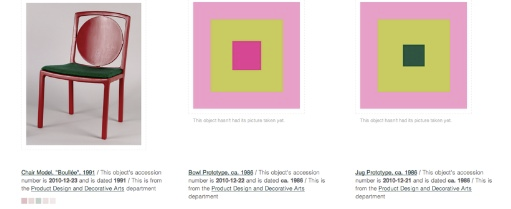MuseumNext Keynote - Seb Chan, Cooper-Hewitt National Design Museum
/Slide 1 @sebchan presentation
@SumoJim introduced Seb Chan as having the blog everyone in the room should be reading, are you? His keynote at #MuseumNext was inspiring, intimidating and informative. Slides are at slideshare and rather than regurgitate the talk here, this post will be key bits I found as new, useful and how they may be useful.
The past 10 years has seen a noticeable shift in control of content, from museums to the visitors and is an area I definitely agree with Seb and strongly believe more people need to acknowledge and start building their museum offer with that in mind. Museums can remain an authoritative source, encyclopaedic in their specimens and as repositories of knowledge, but visitors can add to that and need to have options open to share such information.
Seb made the observation of all Cooper-Hewitt had achieved was with done only 75 staff, his previous museum Powerhouse had over 300. This point generated good debate in later conversations and the question debated of whether the size of organisation had a Dunbar number equivalent point which saw dynamism or flexibility reduce as the staff number increased, people thought 100 was possibly the tipping point.
Technology acts as an amplifier - TOTALLY check that point - along the "vectors of scale" of geographic reach, temporal persistence and deepening context capture this well.
Slide 97 @sebchan presentation
These rules or strategy are followed at Cooper-Hewitt (C-H) and have contributed to the huge amount which has happened since Seb has taken over, I find it intimidating and hugely impressive. Key is the staff and two great points were made which have to be adopted everywhere. "hire people smarter then you. Invest in training" and as digital audience grows so too should the digital audience facilitating and delivering that! *hands up those doing either of those*
A theme seen in later presentations is the idea that the prototype is the product, getting things out the door and improving iteratively is the lesson of the week for me. Borrow/link to data already provided, that is why the Internet is a network, surely. For the 93% of objects not digitised or with poor records then C-H has worked a system that creates links to places with more information; Wikipedia, other museums, etc. And the search facility had two days of work on it which created a Josef Albers effect to the default image to help scan them and ascertain more data, simply through colours and shapes designed dependant on the known data on the object versus what is missing, genius.
Slide 82 (detail) @sebchan presentationUsing the building as an object and a user of the API is an idea I am not 100% clear on, that said better use of the building as a player in the experience is important. You choose whether it is a 'shouter' or a 'helper,' e.g. the Rijksmuseum is the helper, it's galleries are designed to show off the art (help), while the corridors are providing more visual pleasures (shout) as you move between the curated ages. As the collections begin to catch up on how they are being catalogued, stored and displayed in the digital age so too will the buildings be able to provide more information for the visitor's personalised tour(s).
Finally Seb talked of metrics and they were 'simple' and nothing unexpected, it just shows simplicity does pay of. Great kick off to the conference and had delegates buzzing the rest of the day.



